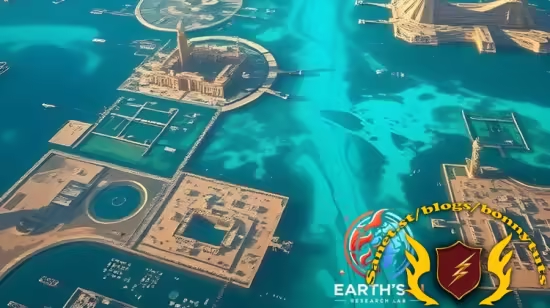MODIS Flood Mapping with Google Earth Engine
Satellite Flood Mapping
What you'll learn
Access and process MODIS satellite data using Google Earth Engine, including filtering by date and region for flood monitoring purposes.
Calculate and interpret the Normalized Difference Water Index (NDWI) to identify water bodies and detect flood-affected areas.
Apply thresholding techniques on NDWI values to accurately detect and classify flooded regions.
Visualize, analyze, and export flood maps from Google Earth Engine for use in GIS software or decision-making workflows.

Requirements
No prior experience with Google Earth Engine is required — the course will guide you step-by-step.
Description
In this course, you will learn how to perform flood mapping using MODIS satellite data within the powerful cloud-based platform, Google Earth Engine (GEE). The journey begins with the fundamentals of remote sensing—covering essential concepts like spectral, spatial, and temporal resolution—and how satellite sensors such as MODIS observe Earth’s surface. You'll understand why MODIS is suitable for regional flood monitoring and how its high temporal frequency supports rapid response to natural disasters.Next, you'll dive into Google Earth Engine, exploring its interface, scripting environment, and vast public data catalog. Step-by-step, you’ll learn how to access and load MODIS data, apply filters based on time and geography, and calculate the Normalized Difference Water Index (NDWI) to highlight water bodies.
You'll use thresholding techniques to detect flooded areas, apply visualization tools to display results, and finally export your maps for use in reports or GIS software.The course also introduces preprocessing steps like compositing and quality assurance filtering to improve reliability. You’ll practice writing JavaScript code in the GEE Code Editor, enabling efficient, reproducible analysis. By the end, you'll have built a complete flood detection workflow and gained the skills to adapt and apply it to different regions and flood events globally.
Who this course is for
Students and researchers in agriculture, environmental science, geography, or remote sensing looking to apply satellite data in real-world scenarios.
Published 7/2025
Created by Earth's AI
MP4 | Video: h264, 1280x720 | Audio: AAC, 44.1 KHz, 2 Ch
Level: Intermediate | Genre: eLearning | Language: English | Duration: 7 Lectures ( 1h 2m ) | Size: 371 MB
Download
http://s9.alxa.net/one/2025/07/MODIS...rth.Engine.rar
Satellite Flood Mapping
What you'll learn
Access and process MODIS satellite data using Google Earth Engine, including filtering by date and region for flood monitoring purposes.
Calculate and interpret the Normalized Difference Water Index (NDWI) to identify water bodies and detect flood-affected areas.
Apply thresholding techniques on NDWI values to accurately detect and classify flooded regions.
Visualize, analyze, and export flood maps from Google Earth Engine for use in GIS software or decision-making workflows.

Requirements
No prior experience with Google Earth Engine is required — the course will guide you step-by-step.
Description
In this course, you will learn how to perform flood mapping using MODIS satellite data within the powerful cloud-based platform, Google Earth Engine (GEE). The journey begins with the fundamentals of remote sensing—covering essential concepts like spectral, spatial, and temporal resolution—and how satellite sensors such as MODIS observe Earth’s surface. You'll understand why MODIS is suitable for regional flood monitoring and how its high temporal frequency supports rapid response to natural disasters.Next, you'll dive into Google Earth Engine, exploring its interface, scripting environment, and vast public data catalog. Step-by-step, you’ll learn how to access and load MODIS data, apply filters based on time and geography, and calculate the Normalized Difference Water Index (NDWI) to highlight water bodies.
You'll use thresholding techniques to detect flooded areas, apply visualization tools to display results, and finally export your maps for use in reports or GIS software.The course also introduces preprocessing steps like compositing and quality assurance filtering to improve reliability. You’ll practice writing JavaScript code in the GEE Code Editor, enabling efficient, reproducible analysis. By the end, you'll have built a complete flood detection workflow and gained the skills to adapt and apply it to different regions and flood events globally.
Who this course is for
Students and researchers in agriculture, environmental science, geography, or remote sensing looking to apply satellite data in real-world scenarios.
Published 7/2025
Created by Earth's AI
MP4 | Video: h264, 1280x720 | Audio: AAC, 44.1 KHz, 2 Ch
Level: Intermediate | Genre: eLearning | Language: English | Duration: 7 Lectures ( 1h 2m ) | Size: 371 MB
Download
http://s9.alxa.net/one/2025/07/MODIS...rth.Engine.rar